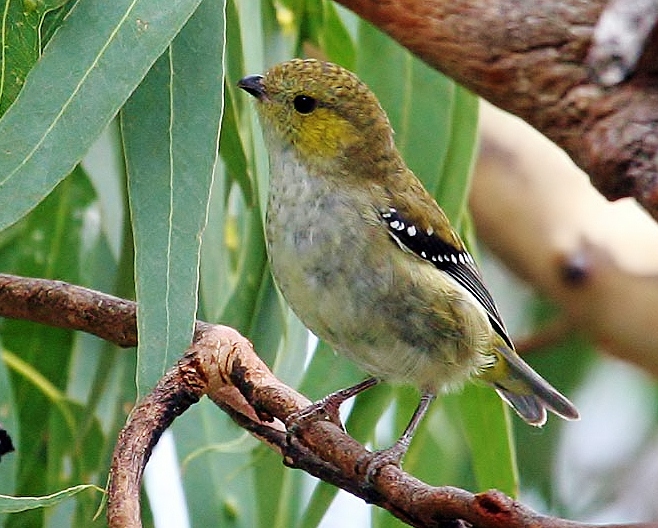 |
| (Photo from Oz Animals) |
Common name:
forty-spotted pardalote (en); pardalote-da-Tasmânia (pt); pardalote de Tasmanie (fr); pardalote tasmano (es); Tasmanpanthervogel (de)
Taxonomy:
Order Passeriformes
Family Pardalotidae
Range:
This species is endemic to Tasmania, only being found along the south-eastern coast and in the offshore islands of Maria, Bruny and Flinders.
Size:
Forty-spotted pardalotes are 9-10 cm long and have a wingspan of 18 cm. They weigh 9-13 g.
Habitat:
These birds are only found in dry, open white gum Eucalyptus viminalis forests or woodlands, at altitudes of 0-1.000 m.
Diet:
They always feed on the canopies of the white gum Eucalyptus, gleaning small invertebrates, such as beetles, flies, bugs, wasps, caterpillars, millipedes and spiders, eating the manna from the Eucalyptus and also the sugary secretions produced by psyllid insects that are known as lerps.
Breeding:
Forty-spotted pardalotes breed in August-January. They build a dome or cup-shaped nest made of Eucalyptus bark and grasses, generally placed in a hollow in a trunk or limb of a Eucalyptus tree, although they may also nest in a hollow stump, log or fence-post, or, occasionally, in a hole in the ground. The female lays 4-5 white eggs which are incubated by both parents for 16-23 days. The chicks are fed by both parents and fledge 23-25 days after hatching.
Conservation:
IUCN status – EN (Endangered)
This species has a very small breeding range and a global population estimated at just 3.800 individuals. The population is believed to be stable, however, habitat loss and degradation through forest clearance, sheep-grazing, subdivision and urban development may pose a threat to the species. Also, habitat degradation allow the aggressive noisy miner Manorina melanocephala and the introduced laughing kookaburra Dacelo novaeguineae to invade their habitat.







